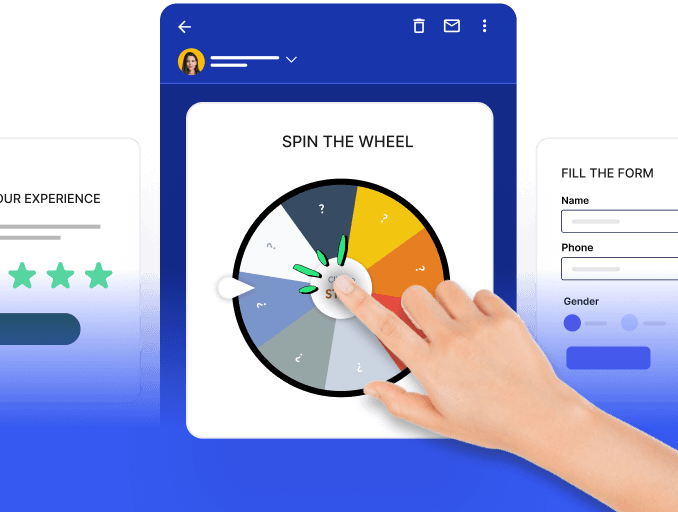Many businesses today run a loyalty program to provide better customer experiences, incentivize purchases, and increase customer retention. However, it becomes quite difficult to point out the specific effects of the loyalty program to understand if it’s doing well.
So, how do you gauge the effectiveness and impact of your loyalty program? The answer is that you’ll need first to define what success would look like for your business and then identify the specific metrics according to your industry and audience. When tracked over time, these metrics will provide valuable insights into how your loyalty program is doing, helping you strategically improve your customer loyalty program.
In this guide, we will delve into the objectives of ecommerce loyalty programs and better understand the 9 key performance indicators (KPIs) crucial for measuring the success of your loyalty program.
Table of contents
Goals of customer loyalty programs
The goals of an customer loyalty program are critical for the success and growth of your online business. Below are some common goals of loyalty programs:
Enhance customer retention: Customer loyalty programs enhance customer retention by incentivizing their purchases. These incentives motivate customers to return to your platform and build emotional connections between them and your brand.
Drive sales: Loyalty programs help propel sales as customers return for repeat purchases due to the attractive reward system in place. The average transaction value also increases as customers spend more to unlock higher-tier benefits.
Gather customer data: Loyalty programs facilitate the collection of demographic information, purchase patterns, and preferences when customers enroll and engage with them. This comprehensive understanding enables more personalized and targeted marketing strategies.
Build a community: Loyalty programs allow you to establish a community around your brand and engage with them on different channels. A thriving community enhances customer retention as members share positive experiences and recommend your products and services.
What are loyalty program KPIs?
Loyalty program KPIs are the key performance indicators (KPIs) or metrics used to evaluate and measure the effectiveness of a loyalty program. These metrics provide insights into various aspects of customer behavior, engagement, and the overall impact of the loyalty program.
To ensure the success of your loyalty program, it's crucial to assess its performance regularly. Whether revealing positive or negative outcomes, this evaluation provides valuable insights for strategic decision-making.
Let’s examine some notable loyalty program KPIs you can use to monitor your program’s success.
9 KPIs to measure loyalty program success
If you're running a loyalty program, then it's important for you to track the 9 KPIs as they help measure the success of your loyalty program.
1. Enrollment rate
The enrollment rate measures the number of customers who sign up for the loyalty program compared to the customer base.
A high enrollment rate signifies that the loyalty program has a strong value proposition and a compelling call to action, reflecting the program's attractiveness to customers. A low enrollment rate may result from ineffective marketing strategies, targeting the wrong audience, and inadequate sign-up incentives.
Consider providing attractive sign-up incentives like bonus points, exclusive discounts, or freebies to boost enrollment rate. Furthermore, optimize marketing channels and messages to target customers likely to join your loyalty program.
2. Engagement rate
The engagement rate of a loyalty program refers to active participation and interaction within the program. Engagement here can be redemption of points, active participation in promotions, frequently transacting to earn points, etc. It is often calculated by taking the number of active participants or engaged members and dividing it by the total number of program members.
A high engagement rate indicates customer interest and active participation in the loyalty program, demonstrating the effectiveness of rewards and incentives. Conversely, a low engagement rate signals scope for improvement in rewards, communication, or overall strategy.
Gamification strategies can boost program engagement. Introduce challenges and competitions to involve loyalty program members actively. With an ESP like Mailmodo, you can send email campaigns with interactive elements like spin the wheel, word games, etc., to increase engagement that you can embed very easily.
💡 Related guide:
3. Repeat purchase rate
The repeat purchase rate measures the percentage of customers who make multiple purchases from a business over a specific period. This metric must be evaluated to establish whether a program is effective in engaging and encouraging customers to make purchases.
A high repeat purchase rate generally indicates customer loyalty and satisfaction, highlighting a business's effectiveness in retaining its customer base. To improve the repeat purchase rate for a loyalty program, tailor rewards based on personalized preferences and implement tiered loyalty programs.
4. Average spend per member
The average spend per member measures the average amount of money each member spends within a specific period. This provides an average spending metric, offering insight into the overall financial impact of each program member.
A higher average spend per member generally indicates a successful loyalty program, as it suggests that customers are loyal and make more purchases from the business. You can enhance the average spend per member by personalizing rewards and utilizing multiple channels for promotion, among other ways.
5. Customer lifetime value (CLV)
Customer lifetime value (CLV) is a metric that measures the total revenue a business expects from that customer throughout its association. This calculation considers several key factors, including the average amount spent per transaction, the frequency of their purchases, and the overall duration of their relationship with the business.
A higher Customer Lifetime Value (CLV) implies that a customer contributes more value to the business. A long-term profitability analysis helps you allocate resources strategically and gauge the profitability of your customers. Continuous analysis and segmentation of your customer base are paramount in identifying high-value customers.
Your loyalty program must adopt a customer-centric approach to increase customer lifetime value (CLV). This entails offering personalized rewards and exclusive experiences that resonate with individual customers, fostering sustained engagement and loyalty.
6. Customer retention rate
The customer retention rate measures the percentage of customers a business retains over a specific period. In the context of a loyalty program, the goal is often to increase customer loyalty, which, in turn, positively impacts the retention rate.
A high customer retention rate implies that many existing customers stay with the brand. This can be due to their loyalty program and customer experience. You can increase retention by offering incentives, rewards, and a positive customer experience.
7. Incremental margin
Incremental margin refers to the additional profit generated from loyalty program members. The loyalty program should contribute to increased customer spending, higher purchase frequency, or the acquisition of new customers. It helps businesses understand if the loyalty program they're running is profitable or not.
A higher incremental margin indicates that the loyalty program contributes additional profit beyond its associated costs. A negative incremental margin suggests that the costs associated with the loyalty program outweigh the additional revenue generated.
To optimize the incremental margin within a loyalty program, businesses should continuously analyze the program's performance, refine their strategies based on customer behavior and feedback, and ensure that the program aligns with overall business objectives while considering strategies to reduce costs associated with running the loyalty program.
8. Redemption rate
It measures the percentage of issued rewards or rewards that customers redeem. It's an important metric for businesses to monitor, as it reflects the effectiveness and attractiveness of the loyalty program to customers.
A high redemption rate indicates that customers find the rewards valuable and enticing, encouraging active participation in the program. There can also be a risk because high redemption rates can mean high program costs if the rewards are substantial. In order to increase the redemption rate of a loyalty program, tiered loyalty programs are designed to create excitement and urgency in addition to personalized rewards recommendations.
Takeaways
Using the above mentioned KPIs is a surefire method to gauge the success of your loyalty program. It assesses your program's effectiveness and allows you to propel it to greater heights by enticing new customers. In this guide, we've highlighted the 9 essential KPIs, though additional metrics must be considered. While having more KPIs adds depth to analyzing and steering your loyalty program, it may often result in information overload, making it difficult to focus on the most critical metrics. Also, it becomes difficult to determine which metrics are actionable and directly tied to strategic goals. By prioritizing and regularly reassessing the relevance of KPIs, businesses can ensure a more focused and effective approach to performance analysis and decision-making.







